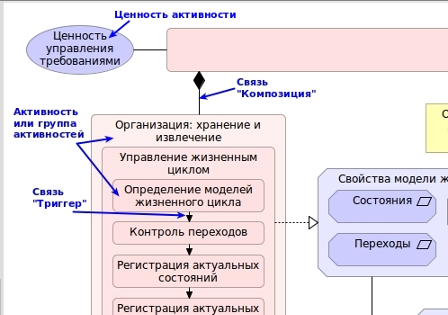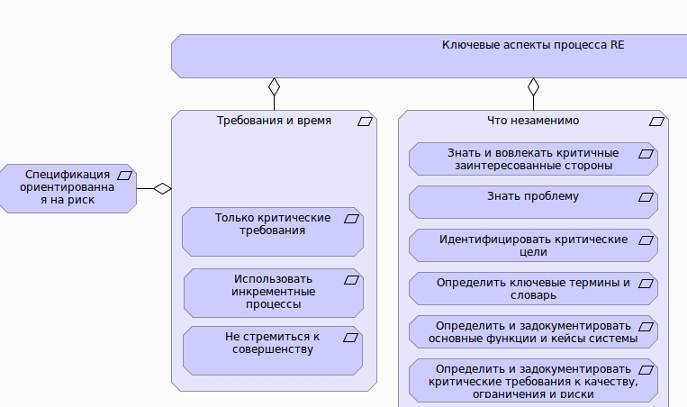Why do we need a knowledge model
For several decades of the existence of the information technology industry, a significant theoretical base has been created. A variety of associations and organizations have developed bodies of knowledge and methodologies in various fields.
Here is some of them:
BABOK (A Guide to the Business Analysis Body of Knowledge) - a guide to the body of knowledge on business analysis from the International Institute of Business Analysis (IIBA)
SWEBOK (Software Engineering Body of Knowledge) is an international standard ISO / IEC TR 19759 from 2015, which describes the generally accepted amount of knowledge about software engineering
SEBOK (Systems Engineering Body of Knowledge) is a body of knowledge in the field of systems engineering developed by the BKCASE organization, which is overseen by a Governing Board made up of three associations (i.e. the International Council for Systems Engineering, the Center for Systems Engineering Research and the IEEE Computer Society)
BPM CBOK (Guide to the Business Process Management Body of Knowledge) - the body of knowledge on business process management of the Association of Business Process Management Professionals (ABPMP)
PMBOK (Project Management Body Of Knowledge) - a body of professional knowledge in project management of the PMI project management institute
IREB CPRE certification (certification in Requirements Engineering) Foundation Level is a methodology for engineering requirements of the IREB community.
These documents are not difficult to find on the Internet, however, they will take a significant amount of time to study. Hundreds of pages of dry text: definitions, classifications, often, there is no Russian translation - all this prevents the assimilation of the valuable material stated in the sources. To systematize and use such a volume of information in work, it is necessary to present knowledge in a more convenient and compressed form.
: , , . ().
:
,
, .
C , , .
, - :
? -
? - , , ; :
,
,
? -
? - .
, :
- ,
- ,
- ,
- , .
Archimate
, ( ) , .
IREB ArchiMate.
ArchiMate , - ( ) : , , , , , , . , , .
Archimate:
1. ,
: «?» - , .
« » (Work Package) .
«» (Composition) , . «» (Triggering) .
, , : → ..

«» (Value) «?».
2.
: «?» - , .
« » (Deliverable).
«» (Realization) - . «» (Access) / . «» ( ) .
, , . , .

3.
: , , , , .
ArchiMate , , , .
«» (Requirement) , . «» (Principle) , . «» (Meaning) .
«» (Association) .
, « RE» ( ) . « 4. » «» ( ).

, «» (Constraint), «» (Influence).

4. :
: «?» - , .
«» (Business Role) , . «» (Business Actor) -, . , , , .
«» (Assignment) , .
, « » « », , « », ( ).

5. .
«» (Aggregation) , . , , . , « », , , «, ».

«» (Composition) , ( ). , CASE-.
«» (Specialization). , «» , DFD- UML- .

6. Archi
.

ArchiMate . .

Archi , html- . : , .

IREB ArchiMate. :
:
,
.
:
, ; -
-
the ability to describe several codes and methodologies in one model; for example, the described methodology does not separate the requirements analysis process separately, which limits the ability to combine this model with the area of knowledge about systems analysis as a whole.